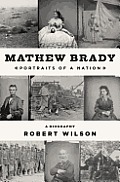 I used to think that Matthew Brady was the only one who t I ook photos of the Civil War. Wrong, of course, as I am about so much else. There were quit I e a few guys running around with cameras, although it must be said that Brady trained most of them.
I used to think that Matthew Brady was the only one who t I ook photos of the Civil War. Wrong, of course, as I am about so much else. There were quit I e a few guys running around with cameras, although it must be said that Brady trained most of them.
Unarguably, Brady was a pioneer in the field, developing techniques and marketing the daguerreotype so that it had become a widely-accepted art long before the war. Brady took pictures of Mexican war generals, most of whom also became Civil War leaders later on. Lincoln credited him with making him known to the country. I’d done some research on the subject for my The Maxwell Vendetta, but had not realized how established Brady and his art had become.


As well as being a technician and an artist, Brady was also a first-class marketer, and he built a gallery of famous pictures in fashionable NY, then DC neighborhoods, made sure he put on exhibits (as far away as London), made sure they were publicized and that his name was identified with the industry. I hadn’t realized that daguerrotypes were often oolored (after the fact, of course) and treated with the reverence of oil portraits. Even without the war, Brady would have had a presence in the history of photographic art.
His war record, even though the exposure time required made it impossible to photograph battles, and even though some pictures were “faked” by moving corpses, etc., Brady fathered and participated in an an astounding achievement. eMade all the more vivid for us by Ken Burns’ use of the stills in his movies of the war.
But what of this biography of Robert Wilson’s? Disappointing. He mutes the color and and excitement of a remarkable life. We learn plenty about the bare facts, but almost nothing about the man. Was he loud, soft, quick, slow, witty, dull, expansive, close-mouthed? We don’t know. And how about his marriage? We might as well be reading his wife’s tombstone for all we learn about her. Was she devoted, distant, jealous, accepting? What about the two together? Loving, happy, argumentative, separate? Hardly a word from Wilson. You want a biographer to be careful, to note where he’s taking a flier with not a lot to back him up, or where he’s merely inferring or supposing, but not only does Wilson let all that get in the way of his story but allows it to spoil the tale, qua tale, entirely. The narrative is so full of “We’re not sure” and “There is (or there isn’t)” evidence to suggest” and “Perhaps he (or she) was thinking” “or perhaps not” that you want to yell at him to quit clearing his throat and get on with it. At least I did.
I’m glad I waded through all that to get to the heart of a fascinating life with an unfortunate ending. For a person like me with a great interest in American history, it was worth it. This book is, however, a bit of a slog, and not everyone may be up to the effort.
